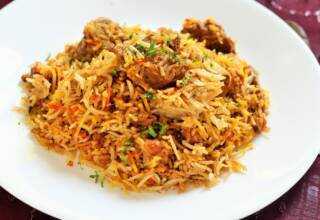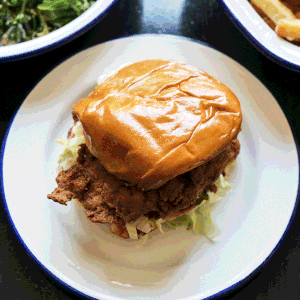
Did you have eggs for breakfast?
Around 65% of Americans reveal eggs are their go-to choice in the morning. It makes sense, considering that eggs are rich in nutrients, and protein and they’re easy to whip up. However, even if you switch between scrambled and over easy, having eggs every day can get boring, fast.
If you want to liven up your breakfast, while still being health conscious then this article’s for you. We’ll show you how to pick tasty meats for breakfast, that your body will be happy to have. By knowing the harmful ingredients to avoid, and what meats are the most wholesome, you’ll be able to enjoy breakfast like never before!
Read on to learn how to pick healthy breakfast meats.
How to Choose a Healthy Breakfast Sausage
If you want to include sausage meats for breakfast, steer clear of the brands that use a variety of meats. Sausage labels that say they’re “sausage meat”, could include a strange hodgepodge of meats. Instead, look for sausages that specifically state they’re made with 1 meat.
For instance, you could buy sausages made solely from beef, lamb, or pork. Chicken or turkey also make great sausages. Next, read the label to see how much of the sausage is meat. Ideally, you’ll want to buy a sausage that has over 90% meat.
Additives and Preservatives
Moving on, whenever possible, it’s best to avoid any sausages that use an excess of additives or preservatives. Oftentimes, meat companies will use the additives as a cheap way to color and flavor the meat. The preservatives and additives also help prevent bacteria growth, but at the cost of your health.
For instance, sugar, natural roast beef flavor, yeast extract, and smokey flavor are all common additives, and they don’t provide any nutritional value. Sulphur dioxide, potassium sulphites, and sodium are common preservatives, and they can cause negative side effects. Some children are so sensitive to sulphites that they have symptoms such as seizures, nausea, and even anaphylactic shock.
You should also avoid brands that use empty fillers to make the sausages look bigger. Examples of empty fillers include maize, soy, potato protein, vegetable protein, and tapioca starch.
Finally, keep in mind that even healthy sausage brands tend to be high in sodium. Instead of having sausage every day, pick 1 day a week where you’ll treat yourself.
Pick the Right Cold Cuts
Cold cuts are also notorious for having high sodium counts. However, if you’re willing to do a little searching in the grocery store, you can find quality cold cuts, with reasonable amounts of sodium.
We find it’s helpful if you narrow your search down to only include organic deli meat. Organic meats are the safest way to go since they’re processed without additives, hormones, or antibiotics. When you’re buying organic cold cuts, you’ll notice that there are only a couple of ingredients listed on the label. The fewer the ingredients, the more wholesome the product is.
Natural vs Organic Meats
Be wary of any deli meats that use the term “natural” on the packaging. Natural and organic are 2 different things. The FDA hasn’t created a formal definition for the word natural. Both the FDA and USDA agree that products claiming to be natural should at least be free of artificial ingredients, such as flavors or coloring.
However, since there isn’t a firm definition for the word, meat companies can decide what’s considered artificial. As a result, you could wind up paying more, for a product that’s supposed to be healthier, but isn’t.
Ingredients to Avoid
What ingredients should you avoid in all processed breakfast meats? First, sodium phosphate is commonly used to thicken cold cuts. Eating too much sodium phosphate can cause abdominal pain, headaches, and even seizures.
Next, it’s common for cured meats to use sodium nitrate, and the unhealthy ingredient can wreak havoc on your body. High blood pressure, bloating, and even kidney damage, have all been linked to consuming products with sodium phosphate. It’s also a good idea to look for nitrate-free meats.
Sodium nitrate is a chemical additive, and it might cause cancer in pregnant women, and children. Nitrates have also been linked to heart disease and diabetes.
A few more ingredients to avoid include dextrose, corn syrup, and fructose. Dextrose can cause weight gain since it’s a type of sugar. Corn syrup and fructose are also types of added sugar, and can easily lead to weight gain.
Healthiest Ways to Cook Chicken
If you want to steer clear of processed meats altogether then chicken could be the perfect solution. If you want to cook your chicken in the healthiest way possible, we suggest you poach it.
When you poach chicken, you don’t introduce any other ingredients into the equation. Instead, all you’ll need is the chicken, and the water you poach it in. Another healthy way to eat chicken is by grilling it.
However, you have to be careful about the ingredients you’re adding when you grill the meat. Instead of using high-fat butter, we suggest you use olive oil. You can brush on ½ tablespoon of olive oil, to help make the chicken more flavorful. The brush will help you use less oil, while still coating the chicken.
You could also use vinegar, along with fresh spices and herbs to marinate the chicken overnight. The result will be a savory piece of meat that’s bursting with flavor.
Choosing Healthy Meats for Breakfast
Now that you know how to choose healthy meats for breakfast, it’s time to start planning your meal! Start by picking 1 meat from this article that you don’t normally have for breakfast.
Next, set aside sometime this week to scour the grocery store aisles. Take your time as you read the nutritional labels and rule out any meats that have harmful additives or fillers. Once you have a wholesome meat choice, pick a fun breakfast food to pair it with that’s different than eggs.
For more delicious tips, take a bite into another one of our articles!























